
Somewhere under an apartment building on West 121st Street, on a section of the street just east of Amsterdam Avenue called George Carlin Way, lies the body of a large Newfoundland who was buried on an early spring day in 1896. His grave, once “marked by a floral display seldom equaled by a rich man’s funeral,” is now under tons of concrete and steel. But the story of Nero, the beloved Newfoundland of Fire Patrol No. 5, will live on through this animal tale of Old New York.*
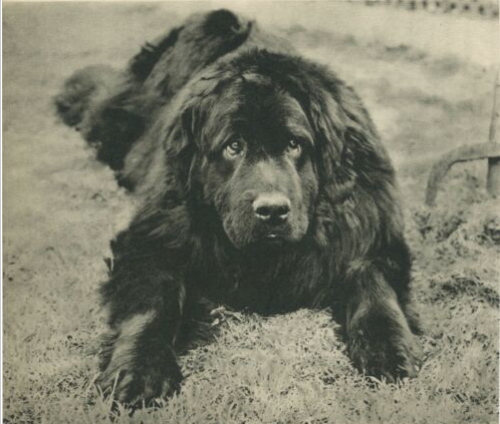
(* Obviously, this is poetic license; his shallow grave was no doubt disturbed during construction.)
Nero was a large, black, good-natured Newfoundland. According to The Sun, every man, woman, and child from Morningside Heights to St. Nicholas Avenue knew and loved the dog. He was the neighborhood pet of Hancock Square and a member of Fire Patrol No. 5 on West 121st Street.
Technically, Nero was owned by Mr. L.C. Pentez, who lived at 315 West 121st Street. Mr. Pentez brought the dog to Harlem in 1890. His son, Willie, introduced Nero to the neighborhood children, and the dog became their playmate.
The kids played all sorts of games with Nero, and he tolerated everything they did with the grace of a good dog. They hitched him to a wagon, rode on his back, pulled his ears, tumbled all over him, and even taught him to walk on his hind legs.
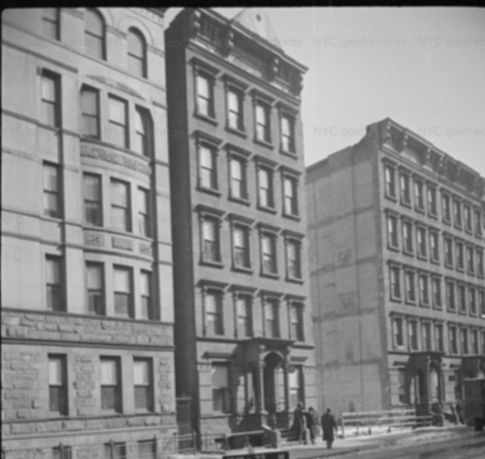
One of Nero’s favorite games was “fire,” in which the children taught him to run at the ringing of a bell. During this game, the children called him their fire dog.
In 1892, when Fire Patrol No. 5 was established at 307 West 121st Street, Nero was eager to join. Soon, Nero got into the habit of responding to fires with the men whenever the bell sounded (sometimes he would jump from an open window in the Pentez’s apartment, which was on the third floor, to respond to the fire gong ringing at the patrol house).
The training Nero had received from the young firefighters attracted the attention of the men assigned to the patrol company. They decided to make him an official member.
It wasn’t long before every firemen in Harlem knew Nero. He never saved any lives, but he did guard over the horses at all the fires until the patrol company was ready to return home. (Actually, he would just sleep under the horses–it gave him a good chance to catch up on some much-needed rest after playing all day with the children.)
When he wasn’t playing with the kids or responding to fires, Nero liked to bask in the sun by the front door of the fire patrol house. Oftentimes on these occasions, the little girls would gather around him or even sleep on his back.

On the Sunday before his death, Nero had accompanied the fire patrol to a fire at 108th Street and First Avenue. While the men were working, he disappeared. The men whistled and sounded their signal gong for him, but he didn’t return. The men searched for their dog as long as possible, but he was gone.
A few days later, two men who were “rough in appearance” brought Nero to the fire patrol house. “Here’s your dog,” they said, before hurrying away. The men offered the dog some food, but Nero refused to eat. Upon further examination, they noticed that his throat was badly lacerated, as if he had been attacked by another dog.
The men called for a veterinary surgeon, who said that the dog’s windpipe had been cut. The injury was fatal. Nero died on April 24.
Captain Edgar D. Smith and six other members of Fire Patrol No. 5 served as pallbearers for the dog, carrying him to his final resting place on West 121st Street, in the shadows of Morningside Heights. More than 100 boys and girls attended the funeral. Ten boys with picks and shovels dug the grave, while several girls collected flowers from nearby Riverside Park.
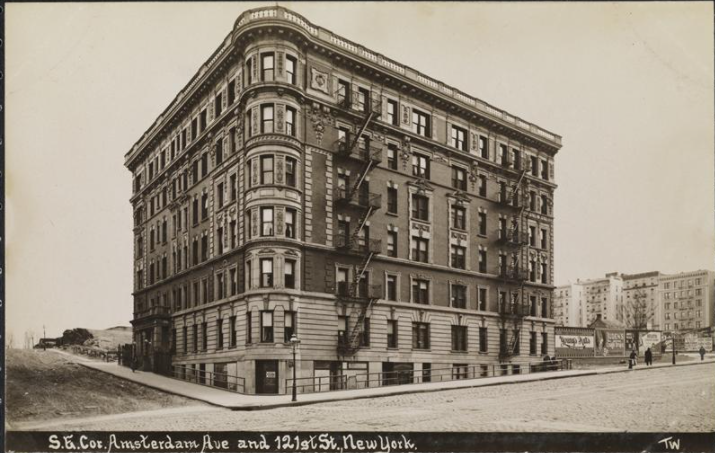
When the grave was completed, the firemen lowered Nero’s body into it. The dog was still wearing the special collar they had presented to him only a year earlier. The men then covered the site with a large mound of dirt, and the girls decorated it with flowers. Additional flowers were placed in a circle around the grave and used to create a little pathway leading to it.
Toward the end of the ceremony, a little boy appeared with a cross made of white wood. On it was this inscription:

After the cross was placed at the head of the grave, the little crying children returned to their homes. The men of Fire Patrol No. 5 returned sadly to their headquarters.
If I ever find myself on West 121st Street, on a section of the street called George Carlin Way, I’ll think of Nero and the joy he brought to the neighborhood. I think the comedian would agree that Nero was a special dog.
I love every dog I ever had. … In my lifetime, I have had me a bunch of different dogs. Because you do keep getting a new dog don’t you? … That’s the whole secret of life. Life…is a series of dogs. It’s true! You just keep getting a new dog, don’t you? That’s what’s good about them. They don’t live too long… Sometimes, you can get a dog that looks exactly like the dog you used to have. Right? You shop around a little bit, and you find a dog identical to your former dog. And that’s real handy cause you don’t have to change the pictures on your mirror or anything. Right? You just bring the dead one into the pet shop. Throw him up on the counter and say, “Give me another one of them. That was real good.” — George Carlin, comedian, dog lover
A Brief History of Fire Patrol No. 5
The New York Fire Patrol – officially the Fire Insurance Patrol — was organized in 1839 and funded by the New York Board of Fire Underwriters (NYBFU) to patrol lower Manhattan. The job of the patrolman or “Patrolio” was to discover fires and to prevent losses to insured properties.
The men worked alongside the volunteer firefighters, and, later, the paid firemen, and were in fact firefighters trained in the art of salvage and overhaul.
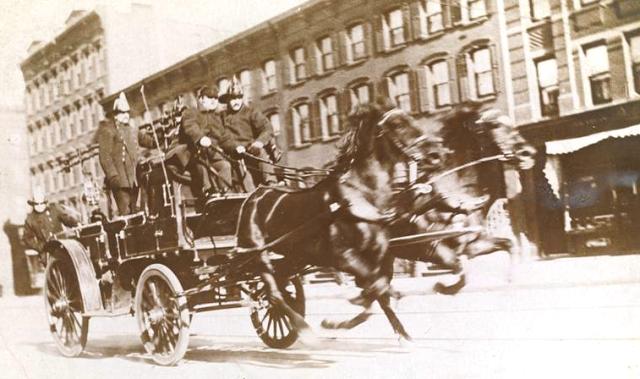
In 1867 a state charter was granted to the Fire Patrol to legally extinguish fires and conduct salvage operations throughout New York City. The New York Fire Patrol was the oldest paid fire service in the United States, and was the last insurance-funded fire salvage corps in the country when it was disbanded in 2006.
As the city’s population expanded northward, the Fire Patrol was also expanded to cover Manhattan north of Central Park. Fire Patrol No. 5 of Harlem went into service on February 1, 1892.
Under the command of Lieutenant Edgar D. Smith, the unit covered territory north of 110th Street. In addition to Lt. Smith, the original force also included a sergeant and 12 permanent and auxiliary patrolmen.

Fire Patrol No. 5 moved into their new headquarters in January 1892. The four-story and basement building had room for 2 wagons on the first floor, with stalls for four horses. A private office, dormitory, and lounging rooms were on the second floor.
The third floor had a sitting room and a drying room for the blankets used at fire operations. The top floor was also used to dry blankets.
And I love this: In addition to the sliding poles from all the top floors, there was also a trap door for the driver on the second floor. This allowed him to step out of bed, press on the door, and drop directly into his seat on the patrol wagon.
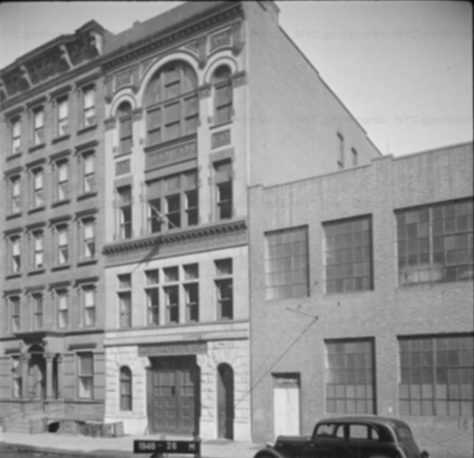
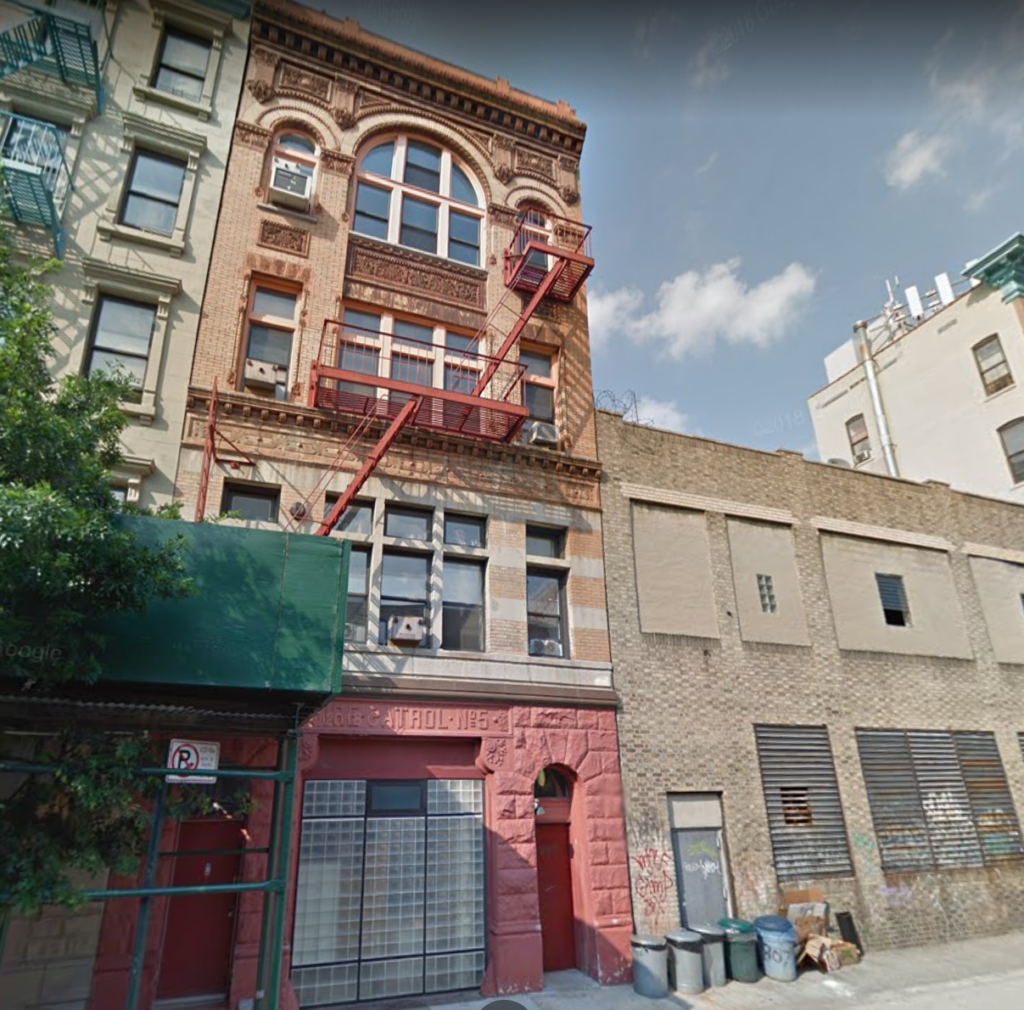





[…] Fire Patrol No. 5 was established in 1892 at 307 W. 121st Street in Harlem. This station had an especially beloved mascot, a Newfoundland named Nero. Technically, Nero was owned by L.C. Pentez, according to Peggy Gavan, a volunteer firefighter and history buff who posts animal tales of old New York on her website, The Hatching Cat of Gotham. […]